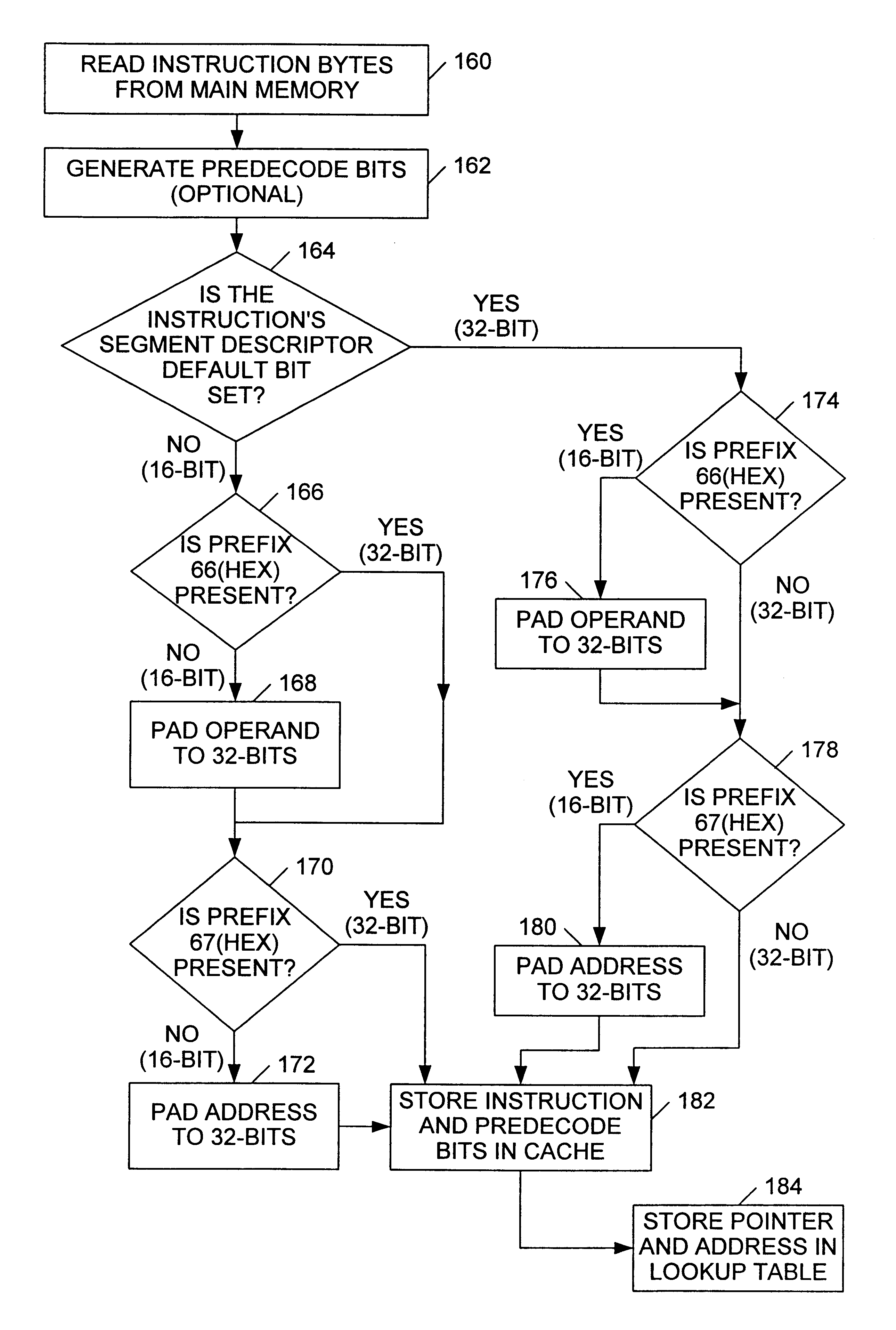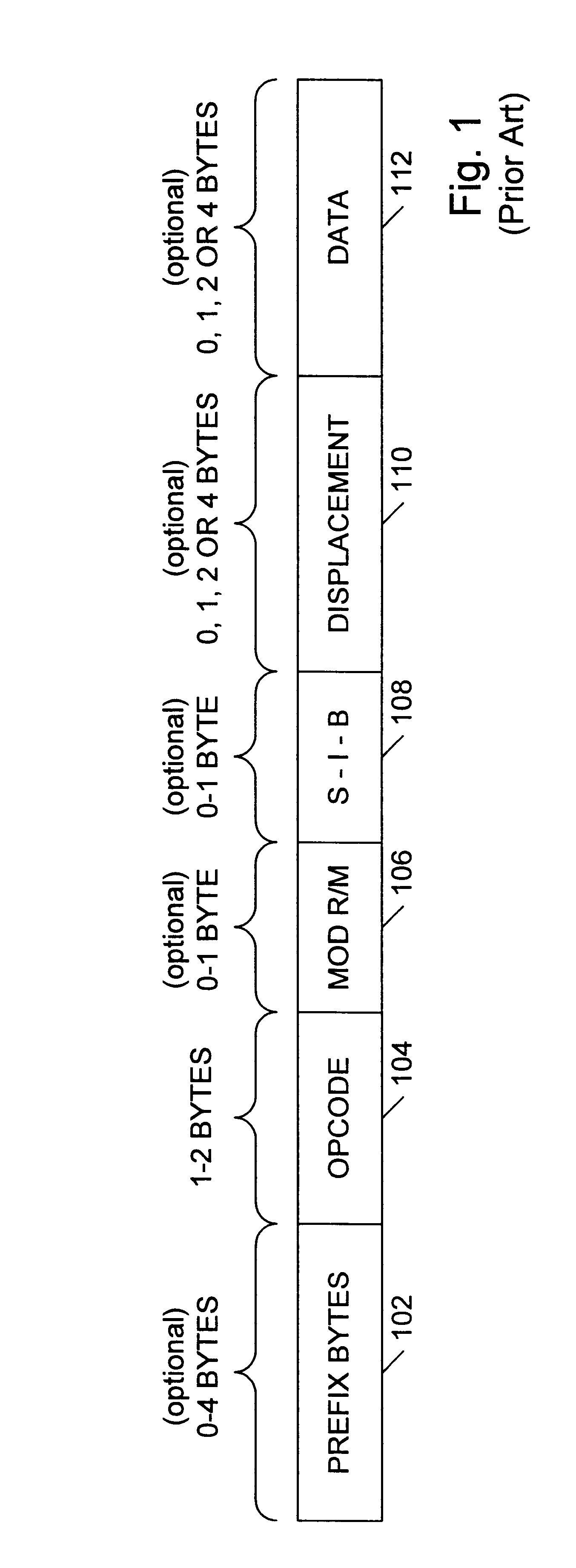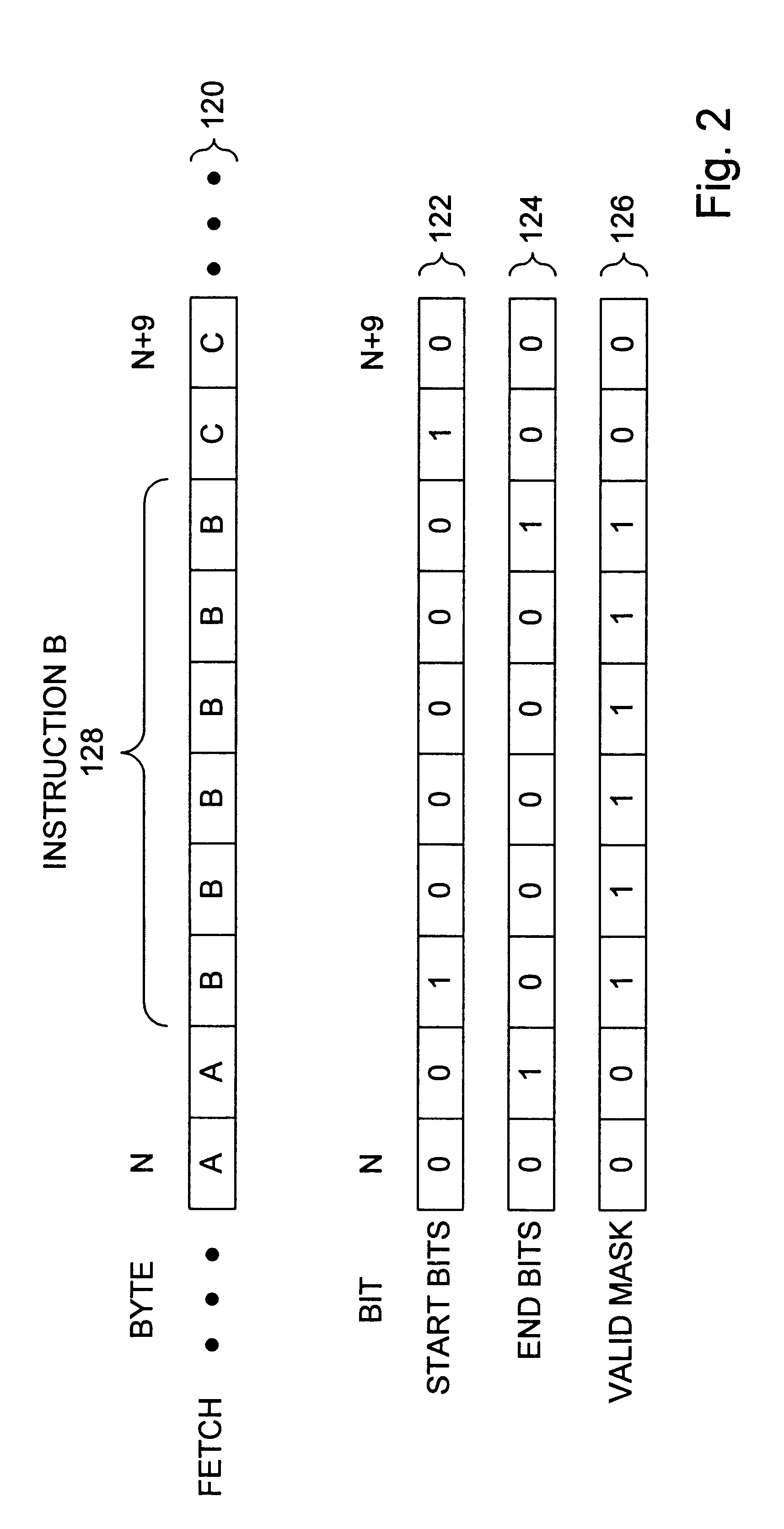Expanding instructions with variable-length operands to a fixed length
- Summary
- Abstract
- Description
- Claims
- Application Information
AI Technical Summary
Problems solved by technology
Method used
Image
Examples
Embodiment Construction
Turning now to FIG. 3, a block diagram of one embodiment of a microprocessor 10 that is configured to predecode instructions having varying address and operand lengths is shown. In this embodiment, microprocessor 10 includes a prefetch / predecode unit 12, a branch prediction unit 14, and an address translation table 36 coupled to an instruction cache 16. An optional secondary cache 40 is coupled to prefetch / predecode unit 12. Scan / alignment unit 18 is coupled between instruction cache 16, decode units 20A-C, and a microcode read-only memory (MROM) unit 34. Decode units 20A-C and MROM unit 34 are coupled to reservation stations 22A-C, which are in turn coupled to functional units 24A-C. A reorder buffer 32 is coupled to a register file 30, and a load / store unit 26 is coupled to a data cache 28. Functional units 24A-C, data cache 28, load store unit 26, reorder buffer 32, register file 30, MROM unit 34, decode units 20A-C, and reservation stations 22A-C are coupled together by result b...
PUM
 Login to view more
Login to view more Abstract
Description
Claims
Application Information
 Login to view more
Login to view more - R&D Engineer
- R&D Manager
- IP Professional
- Industry Leading Data Capabilities
- Powerful AI technology
- Patent DNA Extraction
Browse by: Latest US Patents, China's latest patents, Technical Efficacy Thesaurus, Application Domain, Technology Topic.
© 2024 PatSnap. All rights reserved.Legal|Privacy policy|Modern Slavery Act Transparency Statement|Sitemap



